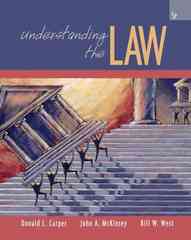Question
1. Suppose that the government wants to raise investment but keep output constant. In the IS-LM model, what mix of monetary and fiscal policy will
1. Suppose that the government wants to raise investment but keep output constant. In the IS-LM model, what mix of monetary and fiscal policy will achieve this goal? How will the affects of this policy show up in the AD-AS model?
2. In the 1980s, the U.S. government cut taxes and ran a budget deficit while the Fed pursued tight monetary policy. What effect should this policy mix have?
3. Note that the above (second) policy mix has no effect on the LRAS curve in the static (AD-AS) model. Explain how these policies would affect the growth of output using a dynamic model. Explain how the different assumptions made in the long run static model versus the long run dynamic (neoclassical growth) model account for their different results for real output.
4. The U.S. 1981 tax act reduced tax revenues to the federal government. Explain the effect of such a change on the U.S. Federal Government budget deficit, the U.S. trade deficit, capital account, and the real and nominal exchange rate measured as Rest of World Currency per U.S. dollar?
The newspaper reports that the nominal interest rate is 12 percent per year in Canada and 8 percent per year in the United States. However, arbitrage ensures that the real rates of interest in the two countries are equal.
1. Using the Fisher equation, what can you infer about expected inflation in Canada and the United States
2. Assuming purchasing power parity holds, what can you infer about the expected change in the exchange rate between the Canadian dollar and the U.S. dollar?
In the general equilibrium model of chapter 3, Mankiw assumes that consumption is a function of disposable income alone: C = C(Y-T). Modify the consumption function to make consumption depend on both after tax income and the level of real money balances (M/P) consumers hold (The assumption is that real balances are a part of wealth, and wealth affects how much we consume).
1. Show that if money demand (the demand for real balances) depends on the nominal rate of interest, then an increase in the rate of money growth now affects consumption, investment, and the real interest rate.
2. Write down the fundamental equation of growth from the Solow model.
3. Explain how the saving rate and the rate of population growth affect the steady-state level of income, and the steady-state rate of growth.
4. What determines the steady-state rate of growth of income per worker? Does the Solow model fully explain the factors that determine steady-state growth in income per worker?
Step by Step Solution
There are 3 Steps involved in it
Step: 1

Get Instant Access to Expert-Tailored Solutions
See step-by-step solutions with expert insights and AI powered tools for academic success
Step: 2

Step: 3

Ace Your Homework with AI
Get the answers you need in no time with our AI-driven, step-by-step assistance
Get Started


